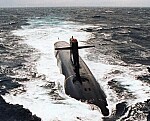The USS Zumwalt: Lessons from a $22 Billion Experiment
The USS Zumwalt (DDG-1000) was once envisioned as the pinnacle of modern naval warfare—a stealthy destroyer bristling with advanced technologies and weapon systems. However, the reality of the project has proven to be a cautionary tale of ballooning costs, technological hurdles, and shifting priorities. While the ship remains a marvel of engineering, it has faced criticism for its limited utility and exorbitant price tag, which has escalated from $1.3 billion per ship in 1998 to an estimated $22.5 billion for the program as of 2020. Here’s a closer look at the evolution, challenges, and future prospects of this unique vessel.

From Vision to Reality: A Brief History
Initially, the Zumwalt-class destroyers were designed to be a fleet of 32 ships with cutting-edge stealth capabilities and revolutionary weapon systems, intended to dominate the battlefields of the 21st century. However, as costs spiraled and technical issues mounted, the program was scaled back to just three ships. With a displacement of 15,600 tons, the Zumwalt dwarfs modern destroyers like the Arleigh Burke-class (9,700 tons) and even many heavy cruisers of World War II, such as the USS Indianapolis (10,000 tons).
One of Zumwalt’s most impressive features is its stealth design, which was intended to make it appear on radar as a small fishing vessel despite its massive size. This was achieved through its sleek, angular design and advanced stealth coatings. However, modifications made during a recent 14-month drydock period have somewhat compromised these features, as its deck was altered to accommodate new weapon systems.
A Costly Arsenal: From Advanced Guns to Hypersonics
The original armament of the USS Zumwalt included two 155mm Advanced Gun Systems (AGS), which were intended to fire Long Range Land Attack Projectiles (LRLAP). These GPS-guided shells could hit targets with high precision, descending almost vertically to ensure accuracy. However, the LRLAP ammunition came with an astronomical price tag of $800,000 per round, making it financially unfeasible to procure in large quantities. To fully stock the ship with 300 rounds, it would have cost American taxpayers over 5.5 billion CZK.
Recognizing the limitations of this system, the AGS units were removed and replaced with Integrated Hypersonic Glide Body (IRCPS) launchers capable of firing hypersonic missiles. This change, while understandable, introduces new challenges. Although the ship now has the capacity to carry 12 hypersonic missiles in four triple containers, the missiles themselves are still in development, leaving the USS Zumwalt without a functional primary armament for the time being.
Power to Spare: The Zumwalt’s Energy Potential
One of the Zumwalt’s most impressive features is its Integrated Power System (IPS), powered by two Rolls-Royce MT30 gas turbines generating 78 megawatts of electricity. This system was designed to support advanced technologies such as electromagnetic railguns and next-generation radar systems. However, with the railgun program canceled and other advanced systems removed, much of this power goes unused. To put it in perspective, the Zumwalt’s power output could supply electricity to 10,000 American households.
Even at a cruising speed of 20 knots, the ship retains a reserve of 58 megawatts, highlighting its overbuilt energy capabilities. This excess capacity may prove useful in the future, but for now, it remains underutilized.
Capabilities and Comparisons
Despite its controversies, the USS Zumwalt still boasts significant combat potential. The ship is equipped with 20 Mk 57 Vertical Launch System (VLS) modules, each capable of housing four missiles, for a total of 80 cells. This is fewer than the 96 cells on an Arleigh Burke-class destroyer or the 112 cells on a Ticonderoga-class cruiser. Its arsenal includes RIM-162 SM-6 air-defense missiles, Tomahawk cruise missiles, and RUM-139 anti-submarine rockets.
In addition to its missile systems, the ship features a small crew of 147 sailors and room for 28 Marines, making it versatile for a range of missions, from high-tech missile strikes to troop deployment.
Ongoing Challenges and Future Prospects
The Zumwalt-class destroyers have become synonymous with high costs and unmet expectations. The National Interest has highlighted concerns about the ship's operational costs, which remain astronomical. Maintenance, upgrades, and efforts to make the ships viable for 21st-century warfare will continue to strain budgets.
Looking ahead, the U.S. Navy is already developing the next generation of destroyers, known as the DDG(X). This program aims to combine the best features of the Zumwalt and the proven Arleigh Burke Flight III design. Key elements of the Zumwalt, such as its advanced power system, are likely to be incorporated into the new ships, potentially salvaging some value from the troubled program.
Conclusion: A Legacy of Lessons
The USS Zumwalt represents both the triumphs and pitfalls of pushing the boundaries of military technology. Its stealth design, immense power output, and potential for hypersonic weaponry are remarkable achievements. Yet, the program's missteps—escalating costs, canceled systems, and a reduced scope—serve as a sobering reminder of the challenges inherent in ambitious defense projects.
As the Navy works to integrate hypersonic missiles and keep the Zumwalt-class relevant, the ship’s legacy remains uncertain. Whether it will ultimately fulfill its intended role or be remembered as a costly experiment will depend on how effectively the Navy addresses its remaining challenges.








